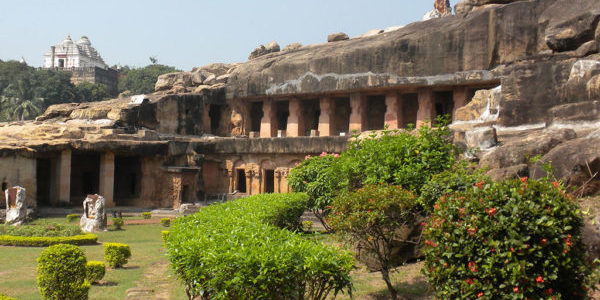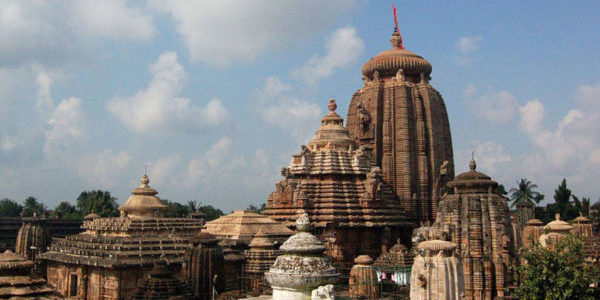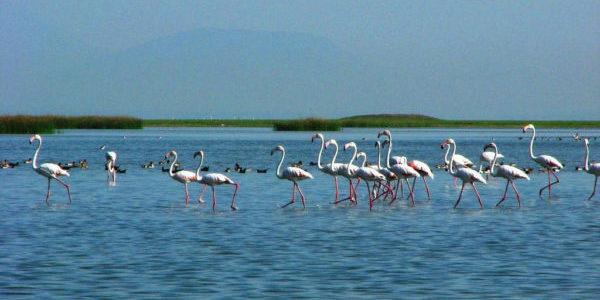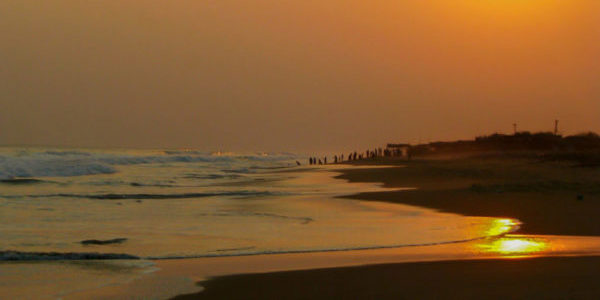
ODISHA
THE LAND OF LORD JAGANNATH
Geographically Odisha (Orissa) stands as a coastal corridor between the northern and southern India. Therefore an assimilation of the races and cultures of the Aryans and the Dravidians; have taken place here in the days of gore.
Lord Jagannath, the lord of the universe, is at the centre stage of Odiyan tradition and culture. Shri Shri Jagannath Mahaprabhu lord of the Universe is the supreme solace and saviour of countless devotees around the world. since time immemorial, His monumental and magnificent Shrine at Shri Purusottam-Kshetra (Puri, 65kms) one of the four major Dhamas of India has been a most sacred centre of pilgrimage and worship symbolising and uploading one of the greatest spiritual and cultural heritages of the world.
Utkal as the ancient name of Odisha represents the excellence in art and architectural grandeur in most of its monuments, Handicrafts and performing art. Odissi dance is the typical classical dance form of Odisha and has its origin in the temples.
Tourism in Odisha is a veritable museum of India’s sculptural and artistic heritage and has long been famous to scholars and connoisseurs for the magnificent Sun Temple at Konark (The legendary ‘Black Pagoda’ of European mariners, 70 kms.), for the majestic temple of Lord Jagannath at Puri (renowned for the spectacular Rath Yatra chariot festival), and for the glorious temples of Bhubaneswar. A true delight for the nature lovers, the state of Odisha offers adventurous Wildlife tours.
Nandankanan National Park is very close (5 Km) to the Conference Venue. Queen of natural beauty, Chilika (100 kms), the largest brackish water lake in Asia covering an area of over 1,100 sq. km is a great attraction for the tourists for fishing, bird watching and boating. In winter Chilika aflutter with thousands of indigenous and migratory birds of many varieties from far and near – even from the distant Siberia.
Bhubaneswar, the capital of Orissa, is also popularly known as the “Temple City of India”. Being the seat of Tribhubaneswar or ‘Lord Lingaraj’, Bhubaneswar (8 Km) is an important Hindu pilgrimage centre. The twin Khandagiri and Udaygiri (10 kms) contain varieties of rock-cut caves, built mainly for the jain monks around 1st – 2nd century B.C. The thirteen years lithic record of King Kharavela engraved in Hatigumpha (elephant cave) is a magnificent specimen of Pali records so far found in India. It was here at Dhauli (17 kms) by the side of Daya River that emperor Ashok laid down the weapons of violence and accepted a life of Ahimsa in the form of Buddhism after the Kalinga war. This stupa as selected by Fujii guruji is a symbol of peace for the future generation to come.

Puri
It is considered as one of the four holy dhamas of India that stands on a raised platform of stone, measuring about ten acres. The largest crowd in Puri is seen during the Cart Festival of Jagannatha which takes place every year in June-July. Akshayya Tritiya tithi that marks the beginning of the construction of the Rathas(chariots) for them ceremonial journey and sojourn of Lord Jagannath, Balabhadra and Subhadra at the Gundicha temple for a week.
Khandagiri and Udaigiri
Udayagiri & Khandagiri Caves One of the earliest groups of Jain rock-cut shelters, the caves of Udayagiri (Hill of Sunrise) and Khandagiri (Broken Hills)which has a rock-cut architecture, art and religion. The two hills rise abruptly from the coastal plain, about six km west of Bhubaneswar, separated by a highway. the caves of Udayagiri and Khandagiri are essentially dwelling retreats of the Jain ascetics, opening directly into the verandah or the open space in front. Mostly excavated near the top of the ledge or boulder, they simply provided dry shelter for meditation and prayer, with very little amenities even for small comforts.


Dhauligiri
Dhauli hill is located on the banks of the river Daya, 8 km south of ghubaneswar in Odisha. It is a hill with vast open space adjoining it. It has major Edicts Of Ashoka engraved on a mass rock, by the side the road leading to the summit of the hill Dhauli.It is presumed to be the area where the Kalinga War was fought.It became an important centre of Buddhist activities. He got abodes excavated for the recluse, instructions inscribed for officials. expounded the main principles Of dandaniti for the public, provided special Status to his new kingdom including the stupas at dhauli.
Lingaraj Temple
The imposing temple standing at 180 ft strikes awe and respect amongst its visitors. Built during the 11th century AD. The temple has been described as “One of the finest examples of purely Hindu Temple in India” .The temple marks the culmination of the temple architecture in Bhubaneswar.It is considered a masterpiece of Indian Architecture for its detailed plan, proportions, seamless joints, elegant craftsmanship and impressive dimensions.


Konark
The Sun Temple at Konark is the pinnacle of Odisha Temple Architecture and an UNESCO World Heritage.The height of the Sun Temple at Konark is estimated to be around 227 feet, making it as one of the tallest temples ever built in the country. The temple was designed as a chariot of Sun God driven by twenty four beautifully carved wheels and pulled by seven horses. The temple was constructed using three types of stones – the laterite stone for the boundary walls, flooring and staircase, Khondalite for the structure and Chlorite stone for the door jams and lintel and the use of iron strips to hold the structure together.
Chilika Lake
Asia’s largest brackish water lagoon with water spread ranging from 1165 sq km m the rainy season to 906 sq km in the dry season is nestled in the heart. It is recognized as one of the most important wetlands in the world because it is home to a phenomenal variety of birds.it offers visitors a spectacular display of its colorful avian charms in a thousand different hues presented by over 160 species. The lake and its reed islands teem with nesting birds-white bellied sea eagles, ospreys, golden plovers, sand pipers, flamingos, pelicans, shovellers, gulls, include migratory ones flying great distances from Iran, Central Asia and Siberia.


Puri Sea Beach
Located on the exotic coastline of Odisha Puri Beach is one of the wonderful destinations for holidaying where sun kissed beaches wet your feet and gentle wind simply elevates you from the earthy odor to the clouds. This beach will make you feel as if you are in dream world. Beach lovers extremely relish holidaying here as the beach enamors a bewitching opportunity to undergo its wild sea waves and enjoy water sports activities. This beach is best to watch sunrises and sunsets. The golden sands and the thunder of the breakers appearing from the Bay of Bengal have mesmerized tourists throughout the years and are the synonyms to the beach.
Chandrabhaga Beach
Chandrabhaga is situated around 3 kms from konark and 30 kms from Puri. It is believed that the sun god himself fell in love with a beautiful daughter of a sage, chandrabhaga. Chandrabhaga then didn’t surrender to the sun god and ran for her chastity. She then jumped into the nearby river to save herself. Hence forth the river was named as Chandrabhaga. From then onwards, the 7th day of the full moon of Magha month is marked as a tribute to her sacrifice.


Nandankanan Zoological Park
Nandankanan which is situated in the Chandaka forests, bears the lush green zoological park being spread in about 4 sq km of area, while the wildlife sanctuary is spread in around 5 sq km is also a home to various flourishing varieties of flora. The splendid environs of Chandaka forests and rippling waters of Kanjia Lake forms flora here. The area is densely greened with trees like Bija, Sal, Asana and Anala. Nandankanan Zoological Park boasts of a fascinating lake and wonderful lush green environs, which is a virtual paradise for birds inviting native as well as migratory birds.

